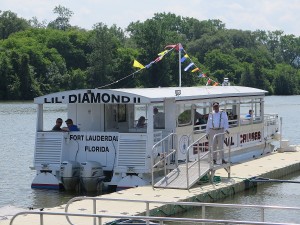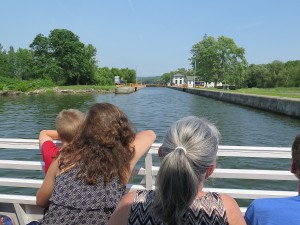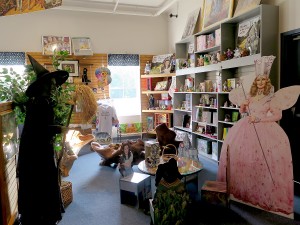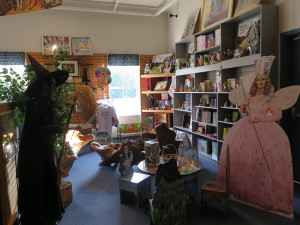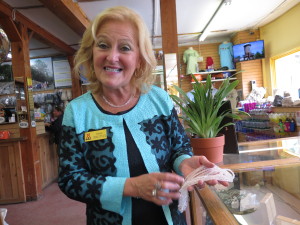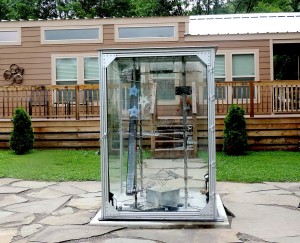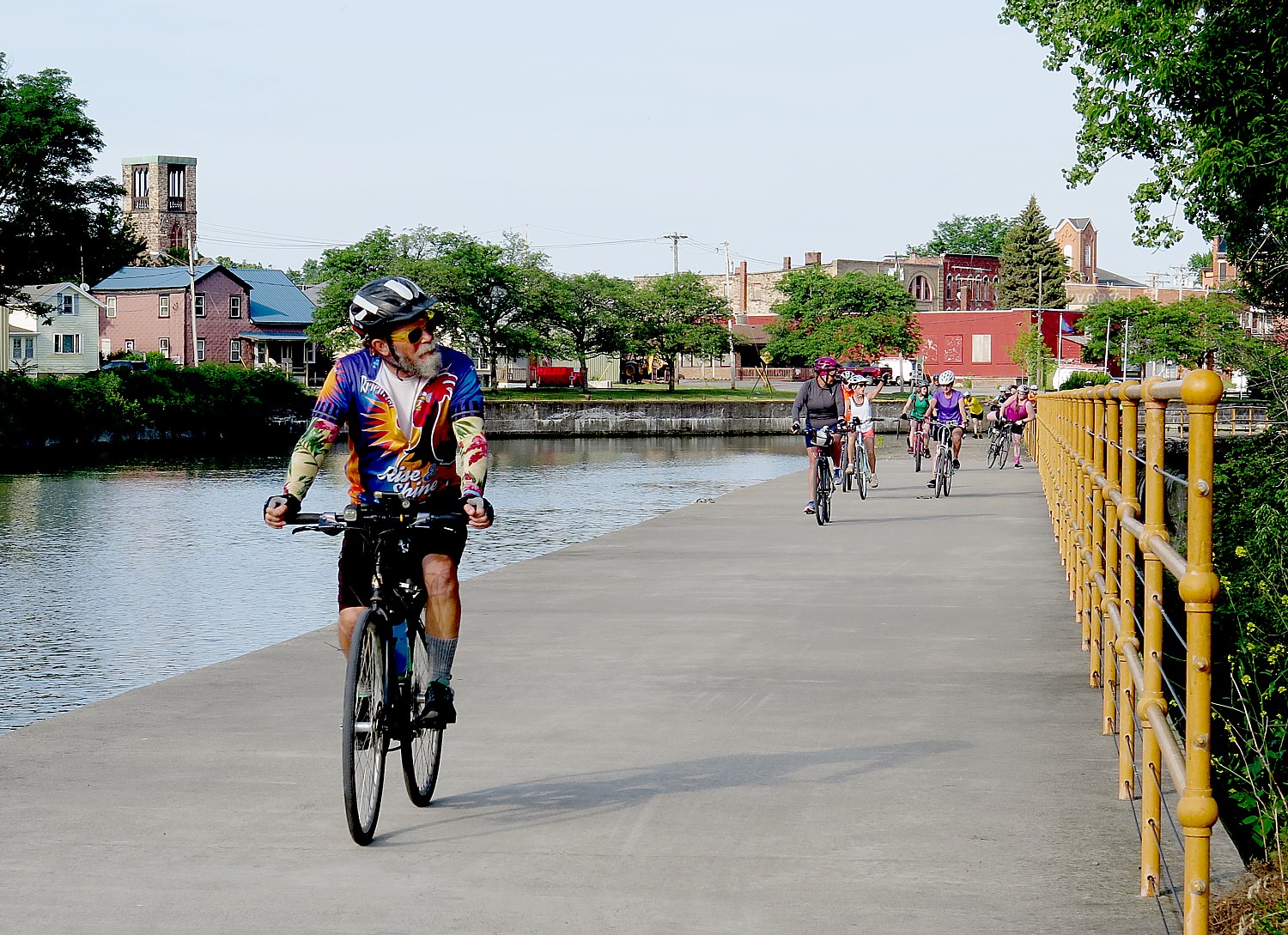
By Karen Rubin, Travel Features Syndicate, goingplacesfarandnear.com
To see how America came to be – and what really made America great – you need only to join Parks & Trails NY’s annual eight-day, 400-mile Cycle the Erie Bike Tour from Buffalo to Albany. Riding the multi-use Erie Canalway, which closely follows the towpath along the original Erie Canal that was built between 1817-1825, transports you 400 miles and through 400 years of history. Unfolding before you, at a pace that flows like a movie, are the pastoral scenes of farmlands, the canaltowns that sprang up to handle the trade, the factories that emerged to manufacture the myriad inventions and innovations spawned by Yankee ingenuity, you cross the Native American tribal areas, the colonial settlements, the Revolutionary War sites. You see the rise and fall of industrialization and urbanization, and now, most marvelous of all, you see before you the reinvention, revitalization and repurposing of these villages, towns, cities and communities that the Eric Canal spawned.
The Erie Canal turned a modest port called New York City into a global trade and financial center, New York into the Empire State, and the United States into a global industrial power, with New York City as its center. It turned a subsistence farmer in the Midwest into a purveyor to the world, and not only transformed geography, but society. The Erie Canal “was the Mother of Cities” – overnight, canal towns catering to the boat traffic sprung up from nowhere and cities like Buffalo, Rochester and Syracuse blossomed. The canal was an incubator for innovation and a transmitter for new ideas. It unified the nation, tying together East and West, and was the artery by which pioneers and immigrants made their way to the settle the frontier. You come away from this journey with renewed understanding of what it means to be an American.
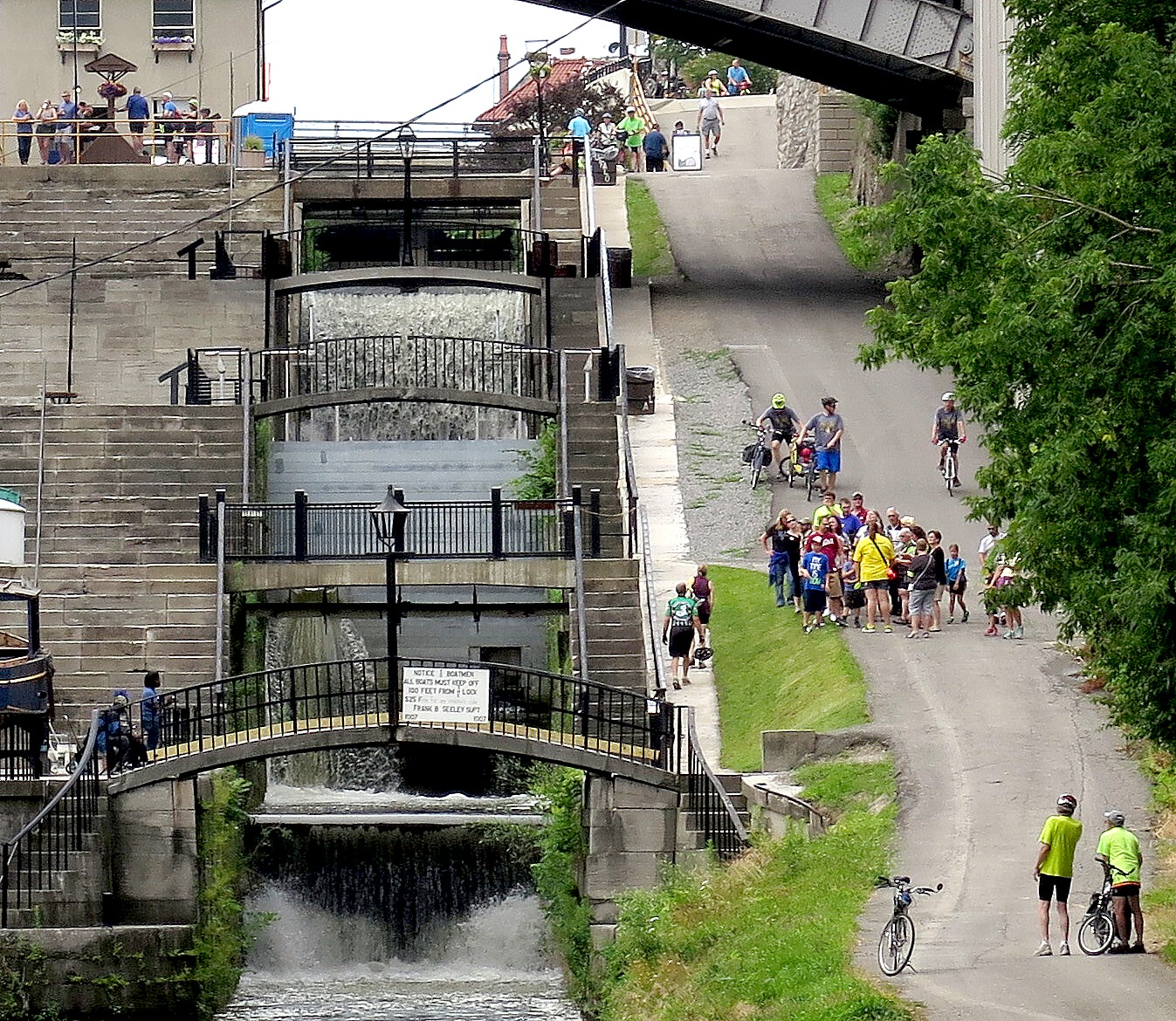
Besides being a marvelous car-free trail (mostly flat), with gorgeous landscapes (you can’t believe this is New York State!), what distinguishes this bike trip is that it is so interesting – the sites, and sights along the way. Every day is enlightening, inspiring, serendipitous. We go from urban to rural, pastoral lands and back to urban, from main streets into forest and into neighborhoods “tourists” would never see. There is so much to see, in fact, all along the way you have to make choices, which is why so many people come back multiple times. Indeed, this is my second Cycle the Erie tour.
This is no typical bike tour.
In the first place, it is one of the best managed, organized and supported bike tours you will ever experience – the 2017 ride (the 19th annual Cycle the Erie) which coincided with the bicentennial of beginning the building of the Erie Canal, July 4, 1817 – had a record 750 cyclists. The bicentennial of the opening of the Erie Canal will be held in 2025 (I’m already making plans.)
Our ride is supported by 90 volunteers and you appreciate each and every one: people who go out and mark the trail for us to follow; truck drivers and baggage handlers; SAG drivers and bikers who are there to help if someone has difficulty on the trail; rest stop crew; food service people; bike repair mechanics; medical nurse; site-set up crew; even a massage therapist and yoga instructor.

What is most impressive is how everything seems to be taken into account – texting is with a severe weather alert or some emergency, orientations that let us know what to expect from the trail and what to watch out for and what weather conditions to expect, what attractions to look for along the way, the best places to stop off for lunch and the best ice cream stops and trailside breweries, even cycling safety talks (done with great creativity and humor). Shuttle buses are organized to take us from the campsite into town for the evening; they arrange for indoor camping (typically the school gym) as well as Comfy Campers (a service that sets up tent for you, the closest thing to glamping). There are shower trucks to supplement the indoor facilities; access to swimming pools; charging stations.
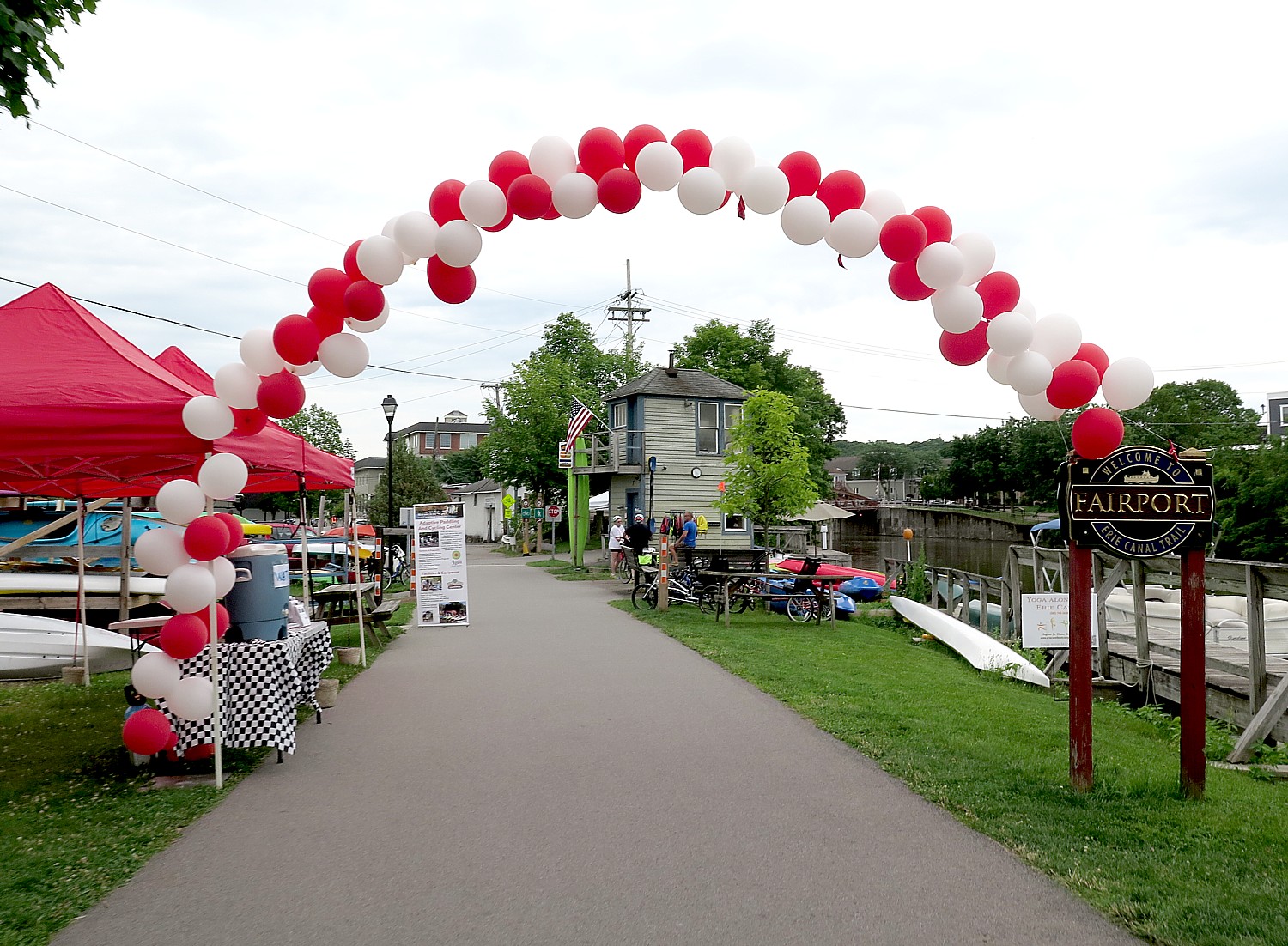
The routes are well marked and signed, and there are as rest stops morning and afternoon with water and snacks and restrooms. Very often the towns and villages set up welcome centers for us on the trail with special snacks and bottles of water that supplement the rest stops. Museums and attractions stay open, early in the morning or into the evening to accommodate us; we get discounts on admissions, shopping and free shipping just by waving our Cycle the Erie wristband.
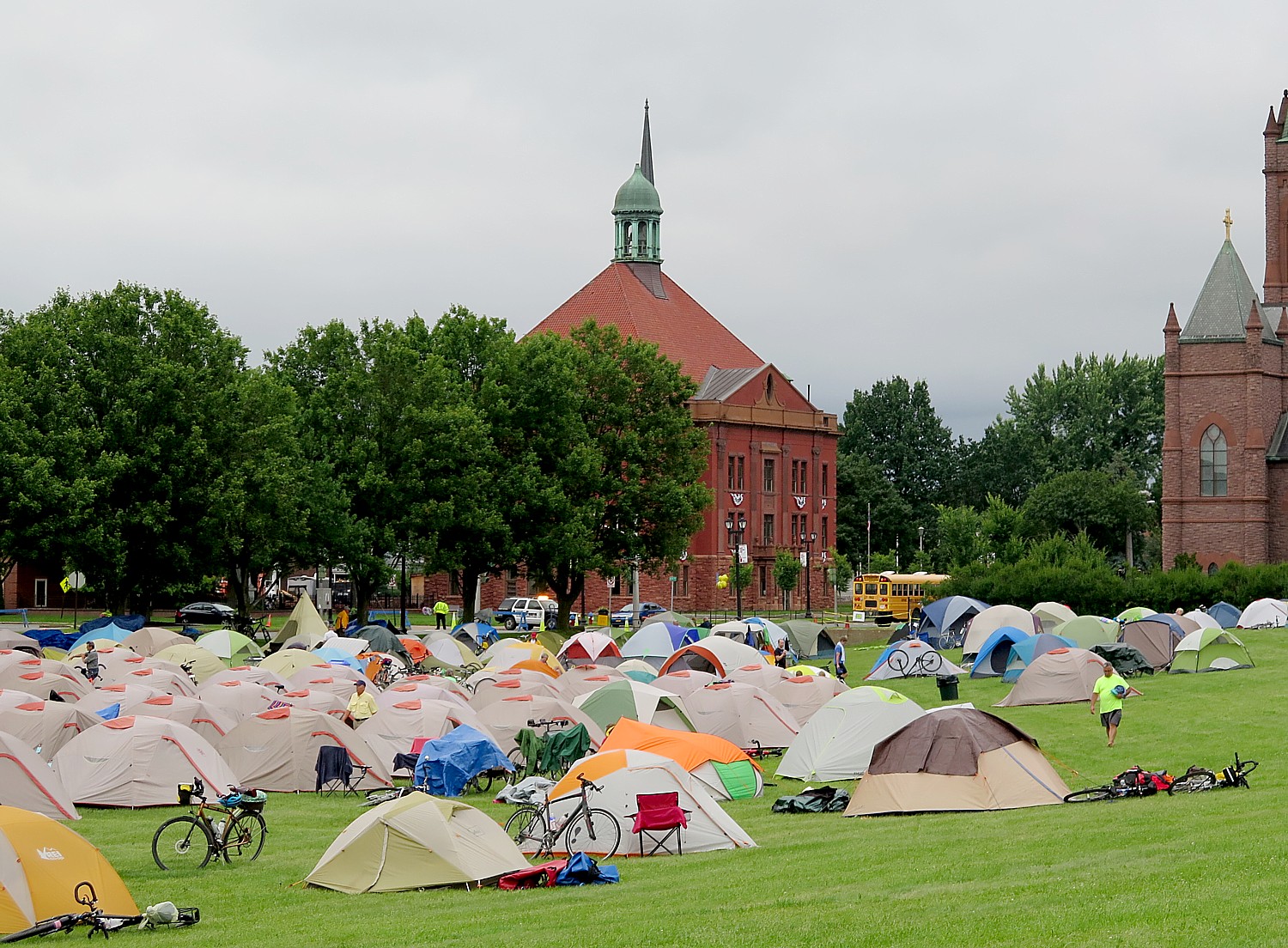
The trail makes for superb cycling – most of the 400 miles are on the dedicated multi-use trail, about 75 miles on roads (that is, until the trail is completed which is in the works by New York State). Much of the trail is crushed limestone; some of it is more rugged or overgrown (making it challenging when it rains); some is paved. The trail is mostly flat except for where we come off and ride the highway overpasses to get to our campsites, most typically on gorgeous grounds of private schools (which amazingly always seem to be at the top of a hill), and then we get to see neighborhoods that we would otherwise be unlikely to visit.
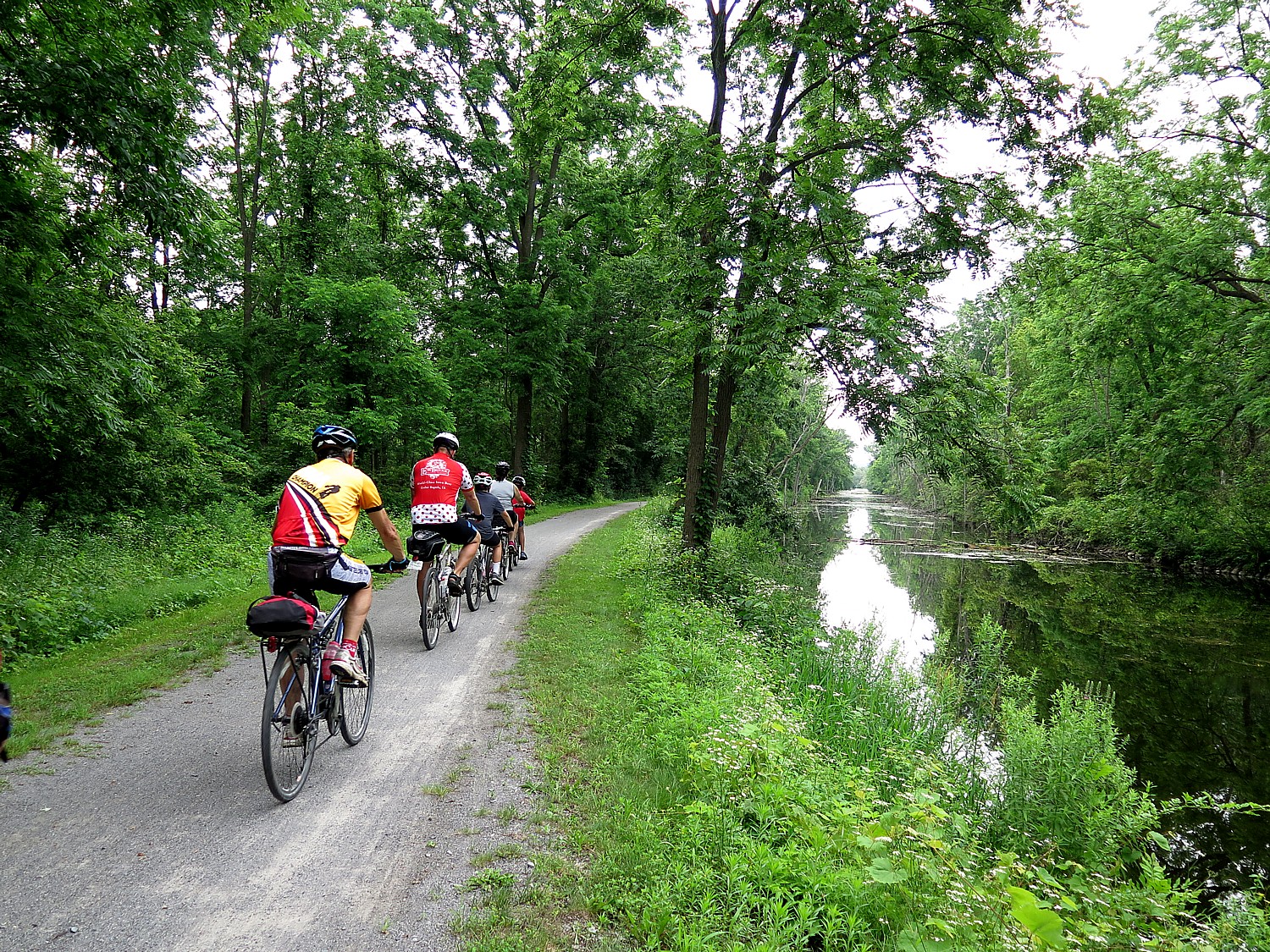
And the people! A trip like this brings like-minded people who enjoy camping, biking and discovery from across the country and around the world, and who very soon form a whole nomadic tribe. Sitting around tables at breakfast and dinner, or catching up with people on the trail, and finding people who step up to help with setting up a tent or fixing a broken pole, there is this marvelous sense of community and camaraderie. This year’s ride – with the most riders ever – drew people from 36 states including DC, 15 from Canada, as well as from as far away as Denmark, Sweden, Switzerland and the United Kingdom; the oldest rider was 84 (doing the ride for her 12th time); the youngest was 3, but the youngest self-powered cyclist was just 8 years old. Three-fourths of us are doing the ride for the first time. There were families, groups like Troop 497 from Baltimore, and lots of solos. One couple rode to the start in Buffalo from Canada and was linking this 400-mile trip to biking down to New York City.
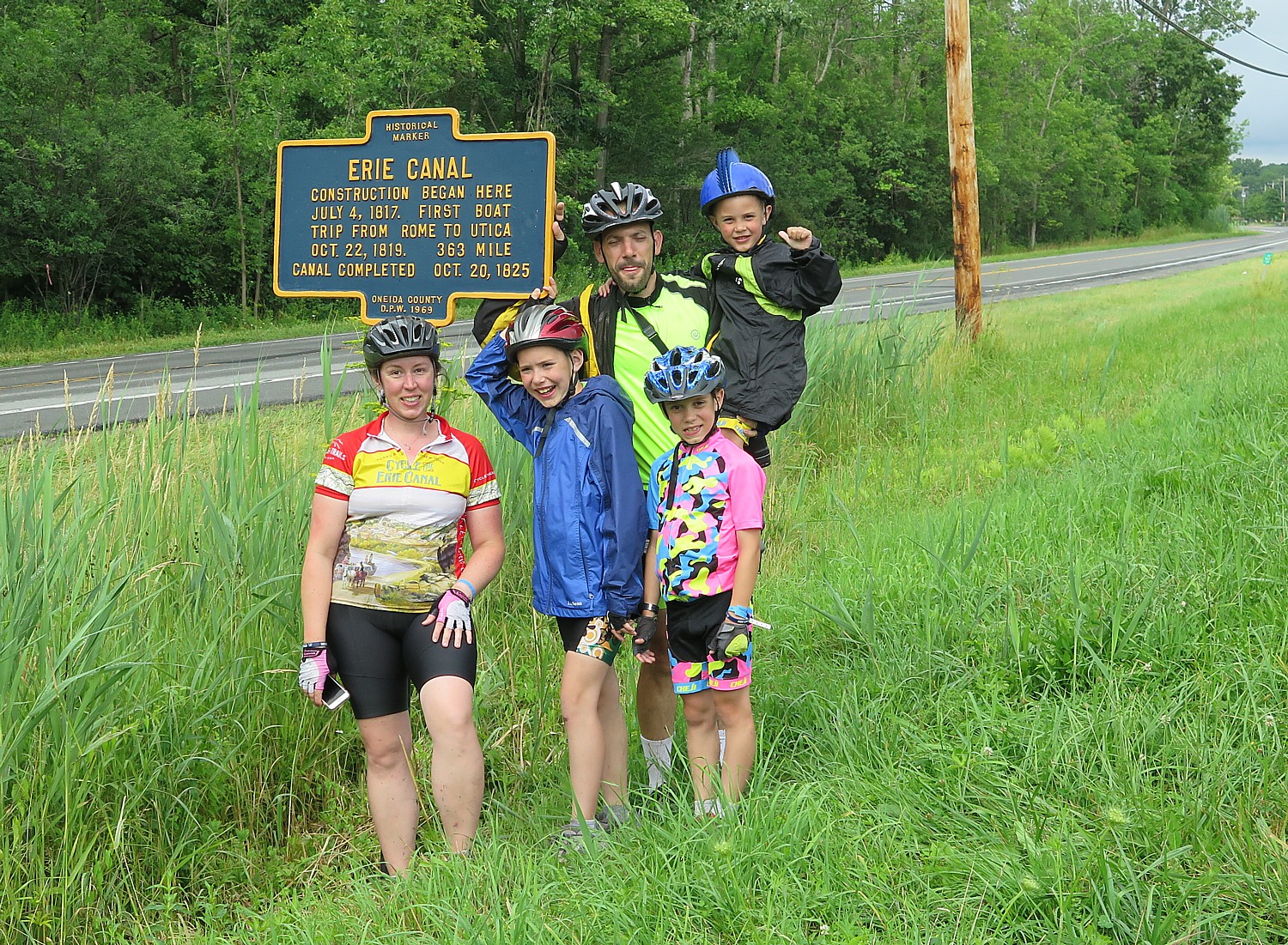
The unexpected treat is how fascinating the historic sites are along the way – it is so intellectually and culturally satisfying. In addition to organizing our visits so that attractions stay open for us either early in the morning or into the evening, each day there are lectures or special programs, like music.
Every day’s ride – averaging 50 miles a day but as much as 63 – is special in its own way – the sights, the experiences, the ride and its physical challenge. First timers tend to focus on the ride – making sure they can complete the distance (we travel at our own pace). But those who have done the ride before know they will be able to go the distance, so take more time to take in the sights; third timers or more explore even further afield – take that yellow brick road up to the Oz Museum, go for that farm-to-table restaurant for lunch, stop in at the brewery or ice cream shop.

This was my second time doing the ride – I did it two years before. There is so much to do – so many attractions and sites and experiences – that I tried as much as possible to do things I hadn’t done on the first ride. And then there is pure serendipity, like weather, which makes a terrific difference in the experience. Knowing what to expect (and that you have done the distance before) gives you the extra confidence to take more time to explore.
Registrations have just opened for the 2018 ride, it’s 20th Annual Cycle the Erie bike tour, which will take place July 8-15. (If you don’t want to do all eight-days, 400-miles, they offer two and four-day segments but then you would have to organize getting back to your starting place.)
And We’re Off!
The tour begins in Buffalo and a good portion of us drive to Albany where we pull up to the Visitors Center, drop off our gear, then park in the adjacent municipal lot before boarding buses for the five-hour drive to Buffalo, where we camp at the Nichols School, a magnificent private academy. (If you don’t want to set up your own tent, you can sign up for Comfy Campers, a service which sets up a truly comfortable tent, with air mattress and fresh towel daily; there is also “indoor camping,” typically in the gymnasium at the schools where we stay. There also are recommended bed-and-breakfast inns along the way.)
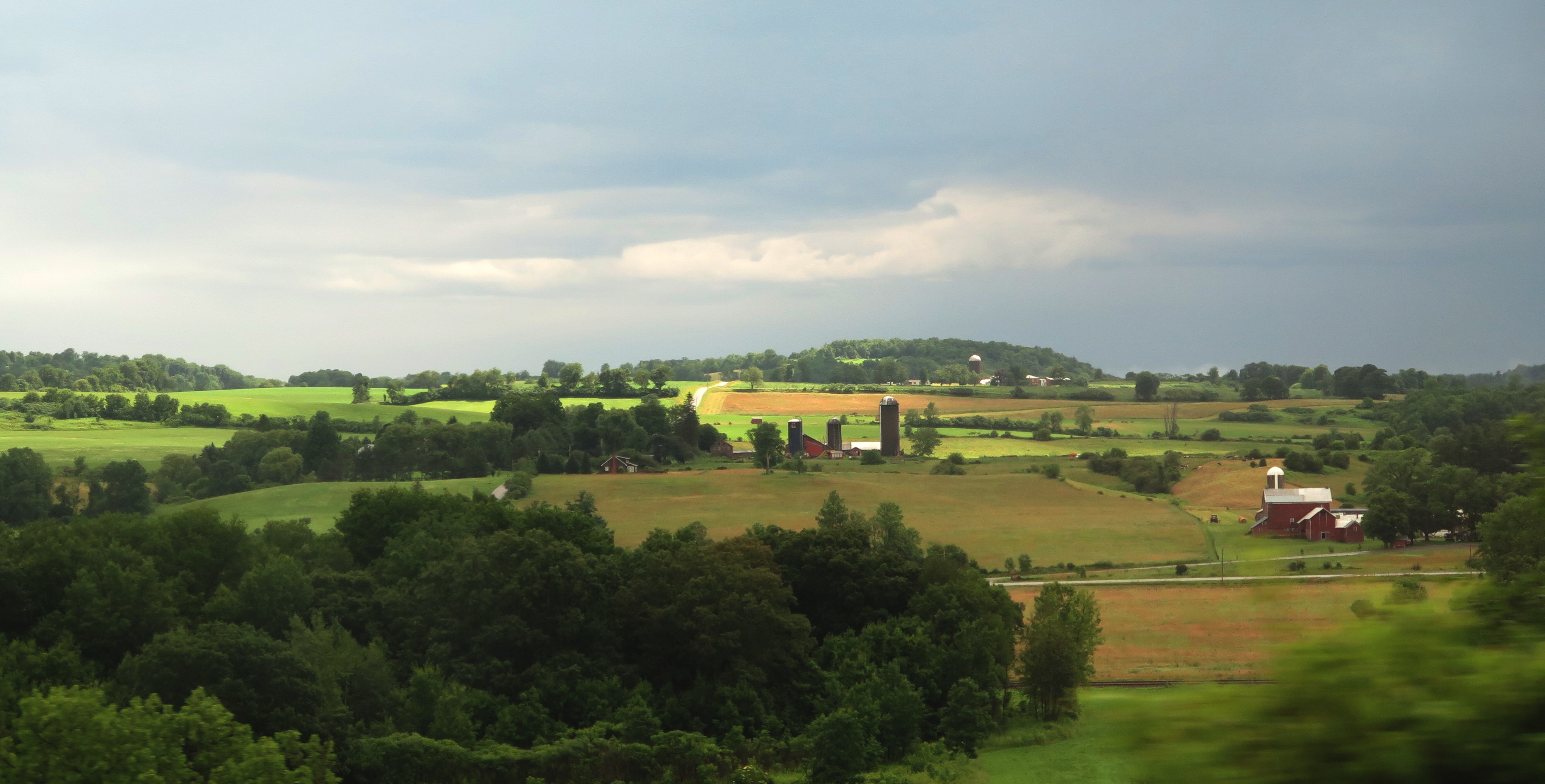
Our journey begins on Saturday night before the start of the ride on Sunday, on the campus of the Nichols School, a magnificent private academy in Buffalo, where we have a welcoming reception and gala dinner, and an orientation about the Erie Canal and our route (Those of us who are here early enough can join an optional pre-tour ride to Niagara Falls and around historic Buffalo, but those of us who have come by bus from Albany arrive just in time to register and enjoy a festive kick-off reception and dinner and orientation meeting.)
The Erie Canal was the most successful public works project in America. Despite its cost ($7.7 million, the equivalent of $18 billion today), the opposition to the folly of Governor DeWitt Clinton’s “ditch” (nothing really changes) and the fact that the new nation did not even have the engineers nor the technology to build such a canal when the first shovel was put into the ground in Rome, on July 4, 1817, the canal actually quickly recouped its investment. In fact, the original canal only lasted until 1836, when it was essentially rebuilt and expanded, and then again, by President Theodore Roosevelt who redirected and replaced the Modern Barge canal altogether in 1903. No longer a “mom and pop” operation where barges and packet ships were pulled by mules, the new canal involved motorized boats.
Day One: Sunday, Buffalo to Medina, 54 Miles
Unlike my first time doing the Erie ride, when we all left at once with great fanfare, this time, we leave the campsite as every other morning, at our own pace (except that we have to get our gear on the trucks between 6 and 8 am and have breakfast (5:30-8:30 am).
Every morning during breakfast there is an orientation to that day’s ride (given twice, once for the early birds, 6:30 am and once for the rest of us, 7 am). They prepare us for road conditions, the weather forecast, alert us to any safety issues in the route, tell us about upcoming attractions we will come upon. We ride at our own pace.
We form a line of cyclists on the five-miles we ride through Buffalo’s streets before we get to the entrance to the Canalway The streets are well marked and there are police to help us through thoroughfares. It is exhilarating to be setting out.

We ride a new section of the Canalway into Lockport – indeed, the goal of this annual 8-day, 400-mile ride is to raise money and awareness to close the gaps. And it’s worked! New York State now has an ambitious program to not only complete the entire Buffalo-Albany trail, but to create a new north-south trail, the Empire State Trail, that will link New York City to the Canadian border – 750 miles of off-road trails all together. This would be the longest state ‘shared use’ trail in nation.
Blue paint along our route points the way to a historical/attraction (for example, the Buffalo Niagara Heritage Village); orange paint on road shows us the way to bike to our destination. There are markers before and after each turn.
We reach a rest stop at 17 miles before coming into Lockport.
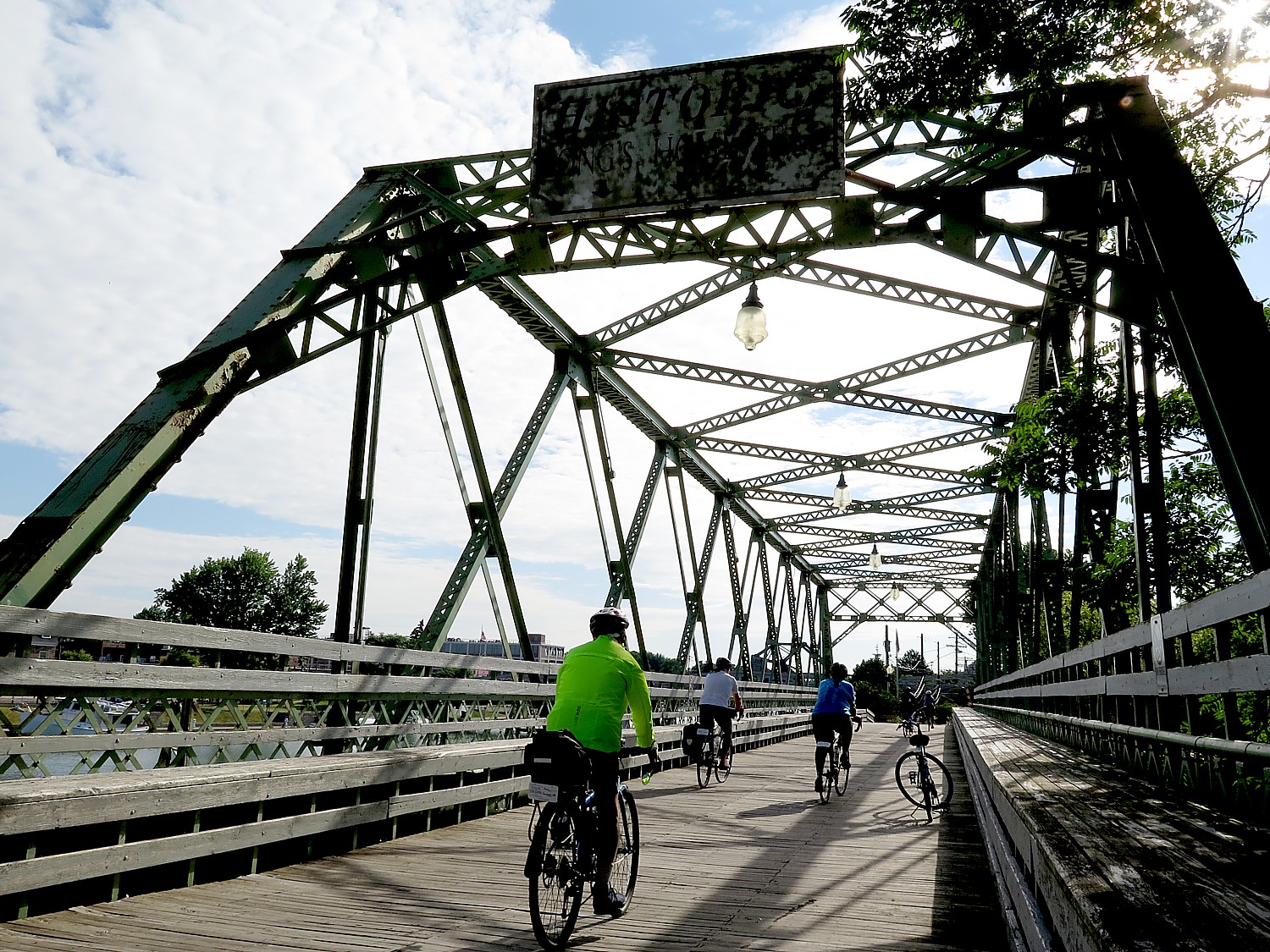
This day brings us into Lockport, where they have arranged for anyone who wants, a free 1 ½-hour-long cruise on the canal through two locks.
Here in Lockport, you get to see in the most compressed amount of space, the entire history of the Canal, with the original Flight of Five locks just next to modern locks (the only place where there is a double lock, one after another), combined with the story how the Erie Canal spurred America’s industrialization.
The 20th Annual Cycle the Erie Canal ride is scheduled July 8 – 15, 2018 (www.ptny.org/canaltour). In the meantime, you can cycle the trail on your own – detailed info and interactive map is at the ptny.org site (www.ptny.org/bikecanal), including suggested lodgings. For more information on Cycle the Erie Canal, contact Parks & Trails New York at 518-434-1583 or visit www.ptny.org.
Information is also available from the Erie Canalway National Heritage Corridor, Waterford, NY 12188, 518-237-7000,www.eriecanalway.org.
More information about traveling on the Erie Canal is available from New York State Canal Corporation, www.canals.ny.gov.
Next:
_____________________________
© 2018 Travel Features Syndicate, a division of Workstyles, Inc. All rights reserved. Visit goingplacesfarandnear.com, www.huffingtonpost.com/author/karen-rubin , and travelwritersmagazine.com/TravelFeaturesSyndicate/. Blogging at goingplacesnearandfar.wordpress.com and moralcompasstravel.info. Send comments or questions to [email protected]. Tweet @TravelFeatures. ‘Like’ us at facebook.com/NewsPhotoFeatures



